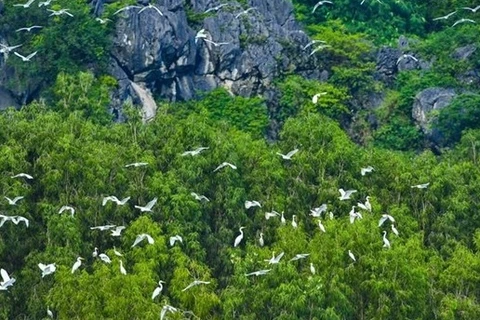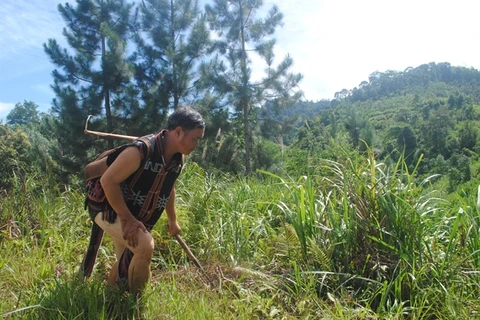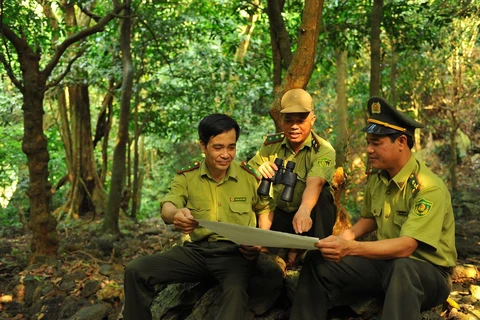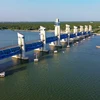Hanoi (VNA) - After nearly eight years of implementing the National Strategy on Biodiversity by 2020 with a vision towards 2030, Vietnam has set up three biodiversity corridors connecting nature reserves.
However, in fact, biodiversity has continued to decline, as reflected through the three levels of ecosystem, species and genetic resources.
Failing to reach target of recovered areas
A representative from the Ministry of Natural Resources and Environment (MoNRE) said that the strategy was approved by the Prime Minister under Decision No. 1250/QD-TTg, effective on July 31, 2013.
The system of nature reserves and sites winning the international status has been consolidated and expanded, raising the total number to 176 with an accumulative area of more than 2.5 million hectares.
Three biodiversity corridors have also been established to connect protected areas in the central provinces of Quang Nam, Thua Thien-Hue and Quang Tri, covering an area of over 521,878 hectares.
Over the past time, the protection of rare, endangered wild species, livestock and plants has gained marked results. Relevant forces have detected many rare wild species, restored endangered ones and developed others with high economic values such as Ngoc Linh ginseng.
However, the ministry said some targets set in the strategy have yet to be completed, including on-land and maritime protected area coverage.
Notably, biodiversity continues to decline in quality, as reflected through the three levels of ecosystem, species and genetic resources; the increasing number of endangered species; many biodiversity corridors connecting planned protected sites yet to be built; and the efficiency of protected area management yet to meet requirements.
The ministry pointed to the rising demand for natural resources, along with the increase in the population and the impact of climate change on fauna and flora, especially those in vulnerable areas.
In addition, there still remain issues regarding the legal and policy system and biodiversity management.
Actions taken to protect biodiversity
Globally, urgency grows for biodiversity conservation as biodiversity loss has profoundly affected human health and sustainable development. Therefore, the United Nations has designated the 2021-2030 period as the UN Decade on Ecosystem Restoration.
Goals and requirements of biodiversity conservation have been included in many important international documents.
In the context of intensive international integration, the Vietnamese Government needs to take strategic actions to protect biodiversity and fulfill its international obligations.
Being aware of the importance, the MoNRE has recently drawn up a draft National Strategy on Biodiversity by 2030, with a Vision to 2050.
The draft strategy sets out nine goals, including protecting and restoring important natural ecosystems; improving the efficiency of wild species conservation, especially endangered and rare ones; preserving and developing genetic resources, sustainably using biodiversity; and controlling acts harming biodiversity, among others.
To that end, the document puts forth such solutions as mobilising the participation of the whole society in the conservation and sustainable use of biodiversity; promoting the integration and implementation of biodiversity conservation requirement in policy making and public investment projects; and strengthening international integration and cooperation in this regard.
The MoNRE will play the coordinating role, helping the Government in the implementation of the strategy. Meanwhile, other ministries, agencies and People’s Committees of cities and provinces will carry out the targets, tasks and solutions set in the strategy.
The strategy also encourages non-governmental organisations, businesses and people to engage in the conservation and sustainable use of biodiversity and ecosystem services.
A survey is being carried out to collect public opinions on the draft document that will be then submitted to the Prime Minister for issuance./.
























